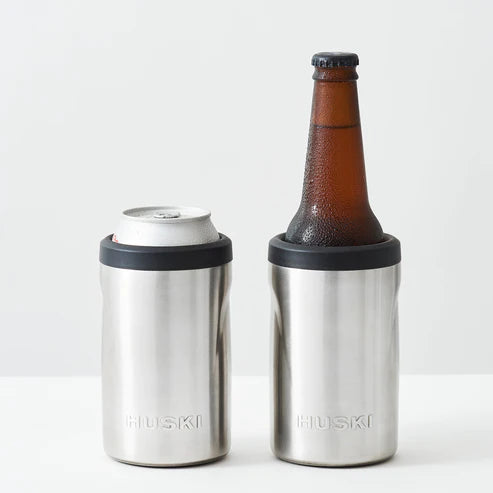Unless you're drinking in a fridge, generally the longer you take to drink your beer the warmer it's going to get. Take too long and you end up with a warm beer. No surprises here.
However, we wanted to find out how long is too long.
So we decided to do a 'scientific' study that any third form (year 9) school kid worth his salt would be proud to hand-in.

Firstly we needed to establish the definition of 'warm'. We decided that usually when people talk about warm beer, they don't necessarily mean it's hotter than the ambient temperature, they usually just mean it's not cold, so we wanted to take this into account.
We also needed a fixed definition that didn't change according to ambient temperature, to avoid confusion.
To help get everyone on the same page, we decided to put together a temperature definition guide. Using The Perfect Beer Temperature guide as a base for our naming conventions, we created five temperature ranges and named them accordingly.
| Reference | Min. temp. | Max. temp. | Colour |
| Ice cold | None | 4.4 °C | |
| Cold | 4.5 °C | 7.2 °C | |
| Chilled | 7.3 °C | 10 °C | |
| Cool | 10.1 °C | 12.8 °C | |
| Warm | 12.9 °C | None |
For reference, below are temperatures for most household fridges and freezers.
| Storage | Min. temp. | Max. temp. |
| Fridge | 2 °C | 4 °C |
| Freezer | -20 °C | -18 °C |
Now that we had some definitions we needed some data.
We decided to use the data from our Huski Beer Cooler Product Test, which compared a standing beer to beer in a Huski Beer Cooler over a period of 30 minutes.
A few notes about this test:
- Both beers started around 5 degrees - turns out beers warm up very quickly when you take them out of the fridge
- The ambient temperature was 22 degrees celsius and it was sunny with some intermittent cloud
- The temperature was measured using fish tank thermometers which were submerged in the beer
Now that we had definitions and data we could start visualising the data.
Here's snapshot of the raw data from the test at 5 minute intervals. We mapped the test data against our new definitions using their respective colours to show progression through the temperature ranges.
| Time | Standard beer temp | Beer in Huski temp |
| 0 min | 5.0 °C | 4.9 °C |
| 5 min | 8.0 °C | 5.5 °C |
| 10 min | 9.9 °C | 5.7 °C |
| 15 min | 11.8 °C | 5.9 °C |
| 20 min | 13.0 °C | 6.1 °C |
| 25 min | 13.8 °C | 6.5 °C |
| 30 min | 14.3 °C | 6.8 °C |
Key
| Ice cold | Cold | Chilled | Cool | Warm |
Some interesting findings:
- Within 5 minutes the standard beer was no-longer cold
- Within 10 minutes the standard beer has nearly doubled in temperature
- After 15 minutes the beer in the Huski had kept more than 6x colder than the standard beer (1 degree change vs. 6.8 degree change)
- Beer in Huski remained cold for the full 30 mins
The most interesting we found was the speed at which beer warmed up. We hadn't even started the test and both beers were no-longer 'ice cold'.
After this initial spike in warming of the standard beer, the warming continues at a steady pace until around the 20 minute mark, when it begins to level off as it begins to approach ambient temperature.
Now, the usual feedback to someone with a warm beer is that they've been drinking it too slow.
However, it seems that this rapid warming might be too much for all but the speediest of drinkers.
We decided to take some of the data from our Huski Beer Survey and see what proportion of Kiwis are likely to be impacted this warming.

Heres' some of the highlights of the survey which looked at New Zealand beer drinking habits:
- 89% of New Zealanders drink beer
- 6% of New Zealand beer drinkers take less than 5 minutes to drink a beer
- 71% of New Zealand beer drinkers take 10 minutes or more to drink a beer
Now when you combine the temperature guide with our test data and our survey results you find that only 6% of kiwis are enjoying a cold beer from start to finish, when not using a HUSKI.
You factor in that 89% of Kiwis drink beer and you discover that 4 out of every 5 (84%) New Zealanders are missing out on delicious cold beer!
It's also worth taking into account that our test data used standing beers, not beers being held or consumed. You add in hand warmth and aeration during consumption and this is likely to further increase the rate of warming.
Your best solution to avoid this warm beer crisis, get yourself and your friends sorted with a Huski and never drink a warm beer again 😉
If you want to keep your beer at the perfect temperature, check out the Huski Beer Cooler 2.0.

